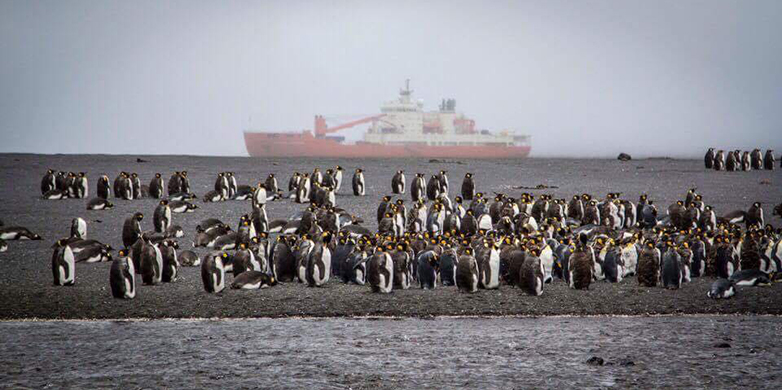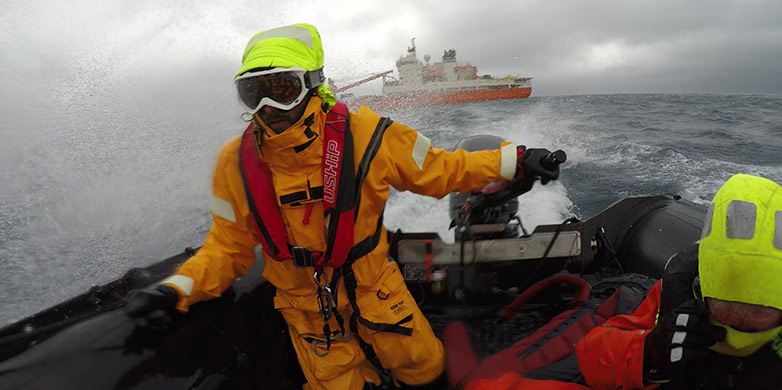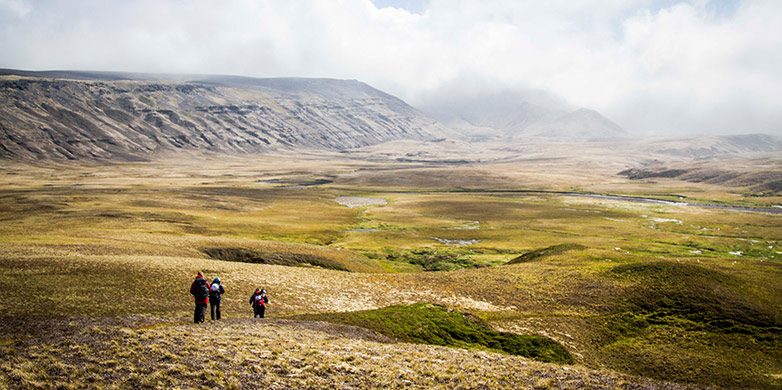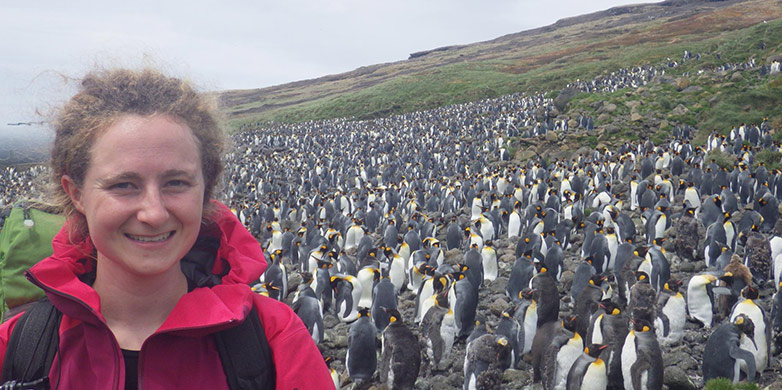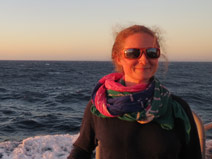High winds on Île de la Possession
On their expedition around the Antarctic, Iris Thurnherr and Pascal Graf visit various subantarctic islands in the Southern Ocean that host unique ecosystems. The researchers are collecting samples in order to learn more about the water cycle.
Today is a special day – 31 December 2016 – the last day of the year. And we’re waiting eagerly – not for the New Year’s Eve party, like the crew of the Russian ship, but for our helicopter ride to Île de la Possession, one of the Crozet islands in the southern Indian Ocean (see box).
I’ve been gearing up for this moment for a long time, and I’m really looking forward to it. Pascal Graf (see his blog) and I have pored over the maps, labelled all the bottles for collecting water samples, and carefully checked our clothes inside and out, so as not to introduce any foreign plant or animal species onto the island. We know how to open the helicopter under water should we crash into the sea, and have studied every detail of the weather forecast.
Over the sea to sand
Two hours later and we’re still waiting; the helicopter can’t start up as the wind is too strong. A number of teams want to get to the island and are sitting around impatiently. There’s a mixture of pessimism and pent-up energy. One thing I’ve learnt on the ship: with so many people living at close quarters, rumours spring up pretty fast. This particular morning is no different, and there’s speculation as to whether we can make a crossing to the island by dinghy. The island authorities have forbidden such a landing in all but exceptional cases. So does this count as one?
15 minutes later we get confirmation: we can now cross to the island by dinghy. After three long hours of waiting and worrying, it’s now all hustle and bustle on board. I grab my dry suit from the cabin, collect a life jacket and am ready to set off with Pascal and Nicolas, a marine researcher, for our destination – Île de la Possession.
The sea is very rough and the wind is whipping the surface water into an ice-cold spray. Luckily the shore soon looms into view. The dinghy makes a safe landing on the beach, but we get a hostile reception – the wind blasts sand grains at us so forcefully, they seem to pierce through to the skin (and several days later our hair is still full of sand). But at last we’re on the island!
Worsening weather
On dry land we’re greeted by Caspar, a scientist from the local research station, who will guide us across the lakeland. It’s going to be no stroll: with the subantarctic sea air beating around our ears, it seems we’ll have to reckon with chilblains rather than sunburn. But we’re already three hours late, so let’s get going!
Hold on a moment now – there aren’t enough snowshoes for Pascal, Nicolas and me. And we need these, as we mustn’t damage the plants and earth off the trail. What’s more, the next dinghy load of researchers tell us that there can be no more crossings due to the high winds and waves. Some of the teams now have a real problem: not all their sampling equipment or team members have reached the island yet. We’re so close to our goal, yet still so far away!
Solved by team spirit
We soon come up with a solution: Nicolas and I will go to collect the water samples; Pascal will help the other teams on the beach. Leaving the penguin colony behind us, we set off over the marshland to a flat valley. The snowshoes feel strange, but I’m glad to have them – without, I would sink knee-deep into the ground.
We come across an area full of lakes, one of which, lying secluded 100 metres above sea level, is perfect for our purposes. Laden with water bottles, we find our way back to the beach three hours later, with still time to spare for a photo with the penguins. Thank goodness the wind has dropped; we all reach the ship safely – just in time for the New Year’s Eve party!
Lessons for life
Those days on the island are a challenge and I learn a huge amount. The teamwork on the island, both with the guides and amongst the researchers, is terrific. It’s impressive how expedition members tackling very different projects all help one another to achieve their goals.
A series on the Antarctic expedition
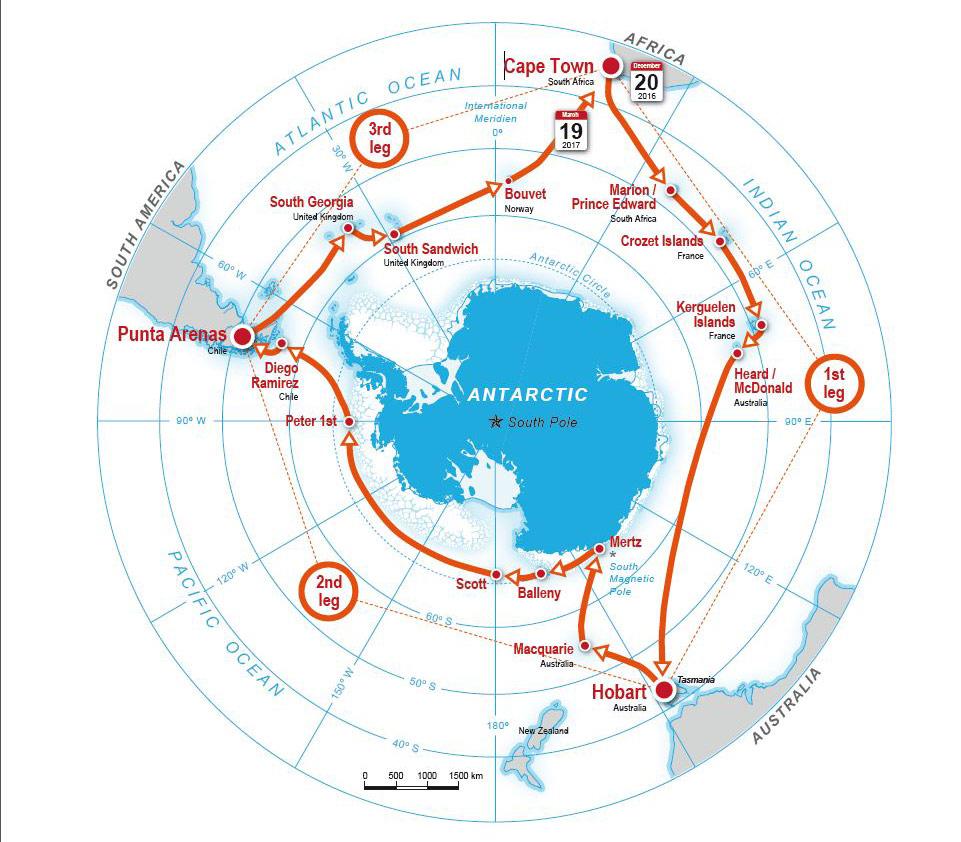
The researchers of the Swiss Polar Institute’s Antarctic Circumpolar Expedition (ACE) are currently on the first leg of their journey to circumnavigate the Antarctic on the Russian icebreaker Akademik Treshnikov, sailing from Cape Town to Hobart in Tasmania. ETH researchers on board are recording their experiences in the Zukunftsblog.
Further information on the expedition: external pageSwiss Polar Institutecall_made, external pageACE Facebookcall_made , external pageACE Twittercall_made, external pageShip-Trackercall_made.

